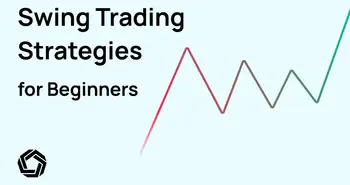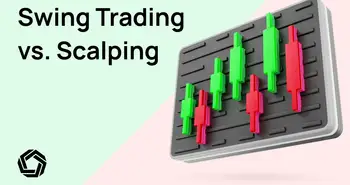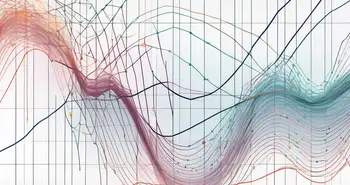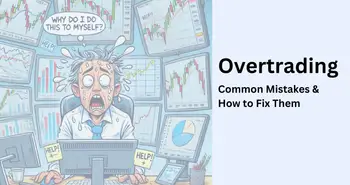Most Successful Swing Traders

Imagine it was a hot summer day on Wall Street, and the stock traders were restless. The air was thick with anticipation, and the scent of money lingered in every corner. But there was a select group of traders, a band of renegades who stood out from the rest. These were the swing traders – a breed of trader that existed on the fringes of Wall Street, always on the lookout for the next big score.
Now, I must warn you that there are no pure swing traders. Swing trading is a strategy that is used in a trader's arsenal alongside other tools of the trade. But when used correctly, it can be a thing of beauty – a dance between the trader and the market that can yield incredible profits.
In this article, we will take a closer look at some of the most successful swing traders in history. These traders made their mark by anticipating major macroeconomic events and making bold bets on the outcomes. They used swing trading principles to ride the wave of these events, capturing massive profits in the process.
Many of these swing trades were made in a macroeconomic context. For example, trading forex pairs were popular targets for swing traders, as they anticipated major shifts in the global economy that would affect the value of currencies. Stock market crashes were also a favorite target, as these traders could see the writing on the wall and bet big against the market.
From Paul Tudor Jones to Stanley Druckenmiller, the list of successful swing traders is long and illustrious. Each of these traders had their own unique style and approach, but they all shared a common trait – the ability to anticipate major market movements and make bold bets on the outcomes.
With that, our list is a nice start to learn a bit more about these people and how they anticipated these amazing swing trades. I encourage you to read more about these traders and their incredible stories. In the world of swing trading, the possibilities are endless, and the rewards can be great.
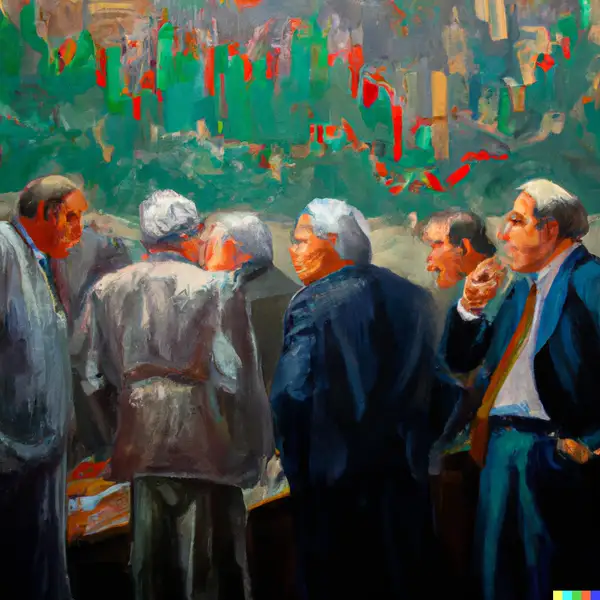
Paul Tudor
The first master trader we will introduce is Paul Tudor Jones, a man who made his fortune on the trading floor and went on to become one of the most successful hedge fund managers in the world. But it was one particular trade in 1987 that really cemented his reputation as a master of the markets.
In the lead-up to Black Monday in October 1987, Tudor Jones had been analyzing the markets and spotting some worrying signs of over-valuation in stocks. Along with his team at Tudor Investment Group, he spent hours poring over graphs of the Wall Street crash of 1929, looking for patterns and insights that could help him anticipate what was coming next.
Two weeks before Black Monday, Tudor Jones started positioning his fund to trade against the market aggressively, betting that the bubble was about to burst. He was one of the few traders who saw the writing on the wall and acted on it, while the rest of Wall Street remained either oblivious or unprepared for the coming storm.
When Black Monday finally arrived, the Dow Jones dropped a whopping 22% in just one day, shattering records and sending shockwaves through the financial world. But Tudor Jones was ready. He had anticipated the swing, and he rode it all the way to a $100 million profit.
Nicolas Darvas
Nicolas Darvas was a Hungarian dancer who became one of the most successful traders of his time in the 1950s. He developed a trading strategy that combined fundamental analysis with technical analysis, which he called the “Darvas Box Theory.”
Darvas focused on identifying stocks that were experiencing a significant increase in trading volume and price, which he believed was a sign of institutional buying. He would then use technical analysis to identify entry and exit points for the stock. He would place a stop-loss order just below the bottom of the Darvas box, which was essentially a range in which the stock was trading, and raise it as it moved higher.
Darvas' trading style can be considered a form of swing trading, as he focused on short-term trades and often held stocks for only a few weeks or months. He would use technical analysis to identify entry and exit points for his trades, and would often buy stocks that were breaking out to new highs. That is how he amassed almost $2,000,000 in only 18 months.
Darvas' success as a trader was largely due to his discipline and ability to quickly cut his losses. He would sell a stock as soon as it fell below the bottom of the Darvas box, which helped him limit his losses and preserve his capital.
Andy Krieger
Andy Krieger was an aggressive trader who gained a reputation for his gift in trading, which was quickly recognized by his employers at Banker's Trust. Krieger was allowed to trade with a limit of $700 million, which was significantly higher than almost all his counterparts.
In 1987, Krieger was watching the world's currencies rally against the battered US Dollar after the Black Monday crash. As investors fled to other currencies that had suffered less in the crash, Krieger noticed that some were being significantly overvalued, such as the New Zealand Dollar, also known as the “Kiwi.”
Krieger decided to make a move on the Kiwi using options, which at the time were a relatively new technique, to short the New Zealand currency by hundreds of millions of dollars. Krieger's short was so big that it is claimed to have been larger than the money supply of New Zealand as a whole, effectively controlling more of the New Zealand dollar that was actually in circulation.
This trade exemplifies the principles of swing trading. Krieger identified an overvalued market and made a short-term trade to profit from the market's correction. He utilized options, which allowed him to execute a large position with minimal capital, as is common in swing trading. His short-term trade was so massive that it shook the market, resulting in a significant 5% decline in the Kiwi. Krieger's shrewd move allowed him to turn his short into a $300 million profit.
George Soros
George Soros is one of the most famous traders in history, and his bet against the British Pound in 1992 is one of the most iconic trades of all time. Soros began to notice that the British Pound was overvalued compared to other currencies. He believed that the UK government would be unable to maintain the Pound's value, and that it would eventually have to devalue the currency. This would cause the Pound to weaken significantly against other major currencies.
Soros decided to take a massive short position against the Pound by borrowing billions of Pounds and selling them for other currencies. He believed that the Pound would weaken, and that he could buy them back at a lower price, pocketing the difference as profit.
Soros' short position was so large that it was equivalent to selling $10 billion worth of Pound Sterling. This caused panic in the currency markets, and the Bank of England was forced to intervene by buying Pounds to prop up the currency's value. However, Soros and other speculators continued to sell, and the Bank of England was eventually forced to devalue the Pound.
As a result of his bet, Soros made over $1 billion in profits, and the Bank of England was left with a massive bill for buying Pounds to support the currency. Soros' bet against the Pound is often cited as an example of the power of currency speculation, and it is widely regarded as one of the most successful trades in history.
Soros' trade against the Pound is also a great example of swing trading, as he held his position for several months, waiting for the Pound to weaken. Swing traders often hold positions for days, weeks, or even months, and they look for larger price movements that can result in bigger profits. Soros' bet against the Pound is a classic example of a swing trade, as he identified a major trend in the currency markets and held his position until the trend played out in his favor.
Mark Minervini
Mark Minervini is a world-renowned stock trader who is famous for his impressive returns and uncanny ability to identify winning stocks. He strongly advocates swing trading, a strategy that involves holding stocks for a few days or weeks and taking advantage of short-term price movements. Minervini's approach to swing trading is unique and based on his proprietary methods for selecting stocks with the greatest potential for big moves.
One of his most successful trades was in 1997 when he shorted an S&P 500 index fund during the Asian financial crisis. Minervini had identified a pattern of weakness in the market, and he believed that the crisis would spread to the United States. He took a large short position, and as the market tumbled, he made a fortune.
Minervini's trade is an excellent example of how swing trading can be highly profitable. By identifying trends and patterns in the market, he was able to make a bold move and profit from a short-term decline in the market. His success shows that swing trading is not just about buying low and selling high, but about understanding the market and having the confidence to make bold moves.
Other Honorable Mentions;
Behold, amongst the titans of swing trading, a few have left an indelible mark on history. Feast your eyes on the likes of Jesse Livermore, who made a killing with a well-timed short before the infamous crash of '29. Or how about John Paulson, whose fortune ballooned during the financial crisis of 2008? And who can forget the legendary Louis Bacon, who made a bold move with a long on oil and a short on stocks during the tumultuous days of the Iraqi war? And let us not overlook the astute Stanley Druckenmiller, who deftly shorted the Deutsche Mark not once but twice with staggering success. Though these few stand out amongst their peers, there are more giants of swing trading to be discovered.
Conclusion
When reading this article on these bold moves, traders placing Billions on one contrarian position, a rumor illustrates the guts it sometimes takes. This rumor is about David Tepper who apparently has a pair of brass testicles on his desk that represents the reflection of steel it takes to enter the market in situations like these.
Also, some famous words of Hunter S. Thompson come to mind “The edge…there is no honest way to explain it because the only people who really know where it is are the ones who have gone over.” Indeed, the most successful swing traders have a certain edge that sets them apart from the rest, a combination of experience, intuition, and a deep understanding of market dynamics. They are masters of the art of timing, able to precisely enter and exit positions, and know how to adapt to changing market conditions.
To truly understand the mindset of these swing trading titans, one must delve deep into the literature, from pure chart analysis to biographical accounts of legendary traders. Our collections on the best books of technical analysis and best books of forex trading in these fields offer a wealth of knowledge and insights. With these resources at your disposal, you too can begin to think like the pros, and perhaps one day, you'll find yourself perched on the edge, looking out at the vast expanse of the financial markets, ready to make your move.
Picture yourself equipped with the necessary tools to tap into the potential of swing trading. Morpher provides a state-of-the-art platform that enables traders to participate in smooth, commission-free trading. If you're interested in forex pairs, stock market crashes, or other macroeconomic events, Morpher offers infinite liquidity and tools to elevate your trading experience.
Join the ranks of the trading moguls—those who, like the swing traders of history, understand the art of timing and adaptability. Your journey to trading mastery begins here—don't miss out on the chance to shape your own success story! Ready to trade on Morpher?

Disclaimer: All investments involve risk, and the past performance of a security, industry, sector, market, financial product, trading strategy, or individual’s trading does not guarantee future results or returns. Investors are fully responsible for any investment decisions they make. Such decisions should be based solely on an evaluation of their financial circumstances, investment objectives, risk tolerance, and liquidity needs. This post does not constitute investment advice.

Painless trading for everyone
Hundreds of markets all in one place - Apple, Bitcoin, Gold, Watches, NFTs, Sneakers and so much more.

Painless trading for everyone
Hundreds of markets all in one place - Apple, Bitcoin, Gold, Watches, NFTs, Sneakers and so much more.

